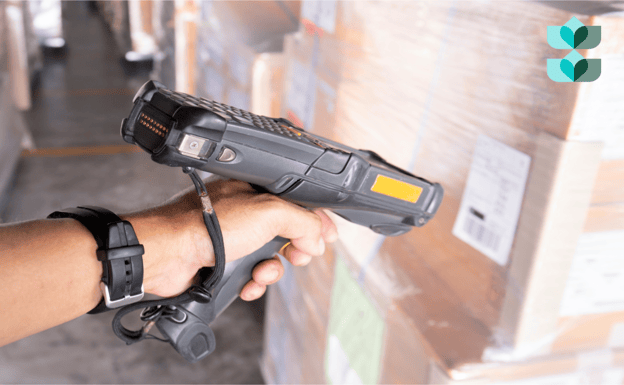
We often receive questions regarding the nature of RMA and its purposes. That’s why the pros here at inecta thought it prudent to give a complete comprehensive overview of what exactly is Return Merchandise Authorization (RMA) is and how it can be essential for many manufacturers.
RMA stands for Return Merchandise Authorization. This process allows customers to return or replace a product from a manufacturer. When a customer encounters an issue with a product, such as receiving a defective item or experiencing a malfunction, they can request an RMA from the seller.
The RMA process typically involves the following steps:
- Customer initiates a request: The customer contacts the seller or manufacturer to explain the problem with the product and request an RMA.
- RMA approval: The seller or manufacturer reviews the customer's request and determines whether the product is eligible for return or replacement under their policies and warranty terms. If approved, they issue an RMA number.
- RMA number and instructions: What is an RMA number? It is a number the customer receives regarding instructions on returning the product. The RMA number serves as a unique identifier for tracking the return process.
- Packaging and shipping: The customer properly packages the product, following the instructions, and returns it to the seller or manufacturer. It is common for the customer to be responsible for the shipping costs unless specified otherwise.
- Product inspection: Upon receiving the returned item, the seller or manufacturer inspects it to verify the reported issue and assess its eligibility for repair, replacement, or refund.
- Resolution: The seller or manufacturer takes appropriate action based on the inspection results. This may involve repairing the product, replacing it with a new one, providing a refund, or offering an alternative resolution, depending on their policies and the return circumstances.
RMA processes vary among different companies and industries. Still, the overall goal is to ensure customer satisfaction by addressing product-related issues and facilitating returns or exchanges in a structured manner.

What Is An RMA Account Exactly?
Often, clients ask, "what is an RMA account?” Specifically, an RMA account typically refers to a dedicated account or system used to manage the Return Merchandise Authorization (RMA) process in a business or customer service context. It is an internal tool or platform that enables companies to track and handle product returns, replacements, repairs, and refunds efficiently.
An RMA account may be part of a company's customer relationship management (CRM) system or standalone software for managing returns and warranties. It allows businesses to streamline their RMA procedures, improve customer communication, and enhance customer experience.
Here are some common features and functions of an RMA account:
- RMA request management: It enables customers to submit their return or replacement requests online, providing necessary details about the product and the reason for the return.
- RMA tracking: The account allows businesses to assign unique RMA numbers to each return request, making it easier to track and monitor the status of individual RMAs throughout the process.
- Product verification: An RMA account facilitates the verification of returned products, ensuring that they match the information provided by the customer and assessing their eligibility for repair, replacement, or refund.
- Communication and notifications: It enables seamless communication between the company and the customer, allowing updates on the RMA status, providing shipping instructions, and addressing any additional queries or concerns.
- Inventory management: An RMA account may integrate with the company's inventory management system to track returned products, their conditions, and the necessary actions to be taken (e.g., repair, restocking, or disposal).
- Reporting and analytics: It provides reporting capabilities to generate insights and metrics related to the RMA process, helping companies identify trends, areas for improvement, and customer satisfaction levels.
Using an RMA account, businesses can efficiently handle product returns, reduce manual errors, improve operational efficiency, and enhance customer satisfaction by providing a smooth and transparent RMA experience.
What Is An RMA Number?
An RMA number, or a Return Merchandise Authorization number, is a unique identifier issued by a seller or manufacturer to a customer who wants to return or replace a product. It is a reference and tracking number throughout the Return Merchandise Authorization (RMA) process.
When a customer encounters an issue with a product and wishes to initiate a return or replacement, they typically contact the seller or manufacturer and request an RMA. The RMA number is then provided to the customer and acts as a key piece of information for both parties involved in the return process.
Here are some key aspects of an RMA number:
- Unique identification: Each RMA number is unique and is a specific identifier for a particular return request. It helps differentiate and track individual returns within the company's system.
- Tracking and monitoring: The RMA number allows the seller or manufacturer to easily track the progress of a specific return from initiation to resolution. It helps in organizing and managing the return process more effectively.
- Reference during communication: The customer must often mention the RMA number when communicating with the seller or manufacturer about the return. This helps streamline communication and ensures the customer's request is properly identified and addressed.
- Integration with documentation: The RMA number is typically included on return shipping labels, packing slips, or other relevant documentation associated with the return. It helps link the physical return package to the corresponding RMA request.
- Resolution and follow-up: The RMA number references the specific return when determining the appropriate resolution, such as repair, replacement, refund, or alternative resolution. It also aids in post-return follow-up and customer support.
The RMA number is an essential component of the RMA process, facilitating efficient tracking, communication, and resolution of product returns or replacements. It ensures the return is properly identified, processed, and resolved, benefiting the customer and the seller or manufacturer.

Who Leverages RMA?
RMA (Return Merchandise Authorization) processes are common across various industries and employed by different entities involved in the sale and distribution of products. All of these entities are invested in ensuring customer satisfaction is paramount. Leveraging reliable RMA is fundamental to the overall success of many entities.
Here are the main parties that utilize RMA:
- Retailers: Online and brick-and-mortar retailers often implement RMA procedures to handle product returns and exchanges. When customers encounter issues with their purchases, retailers may provide an RMA number and instructions for returning the product to their store or warehouse.
- Manufacturers: Manufacturers use RMA processes to manage product returns directly from customers or retailers. They typically handle returns for repairs, replacements, or refunds based on their warranty policies and product condition.
- Distributors: Distributors, who act as intermediaries between manufacturers and retailers, may also utilize RMA systems to manage product returns. They may receive returned products from retailers and coordinate with the manufacturers to process the returns accordingly.
- Service Centers: Companies that offer repair services for products, such as electronics or appliances, often employ RMA systems to manage the return of faulty items. Customers can obtain an RMA number and send their products to the service center for repair under warranty or for paid repairs.
- E-commerce platforms: Online marketplaces and e-commerce platforms often have their own RMA systems or provide tools to facilitate returns for their sellers. They assist in managing the RMA process, including issuing RMA numbers, tracking returns, and facilitating communication between buyers and sellers.
The use of RMA processes may vary depending on the specific industry, company policies, and product warranties. It is primarily employed by entities that want to streamline and regulate the return and replacement of products to ensure customer satisfaction and efficient resolution of issues.

Why Is Having RMA So Important For Manufacturers In Particular?
There are various reasons why having capable RMA processes is essential for manufacturers. They ensure certain standards are met and bolster credibility for companies by demonstrating to customers that they take them seriously and are doing whatever they can to serve their interests before, during, and after the purchase.
- Customer satisfaction: RMA processes are designed to address customer issues with products and provide a resolution. Retailers and manufacturers can enhance customer satisfaction and loyalty by efficiently managing returns, replacements, repairs, or refunds. A positive RMA experience demonstrates a commitment to customer service and can lead to repeat purchases and positive word-of-mouth recommendations.
- Brand reputation: Effective RMA procedures contribute to a company's brand reputation. When customers have confidence that their concerns will be promptly addressed and resolved, they are more likely to view the retailer or manufacturer favorably. Conversely, poor RMA management can damage a company's reputation, leading to negative reviews and customer dissatisfaction.
- Compliance with consumer protection laws: RMA processes help retailers and manufacturers comply with consumer protection laws and regulations. These laws often mandate specific procedures for handling product returns and warranties, ensuring customer rights are protected. By implementing robust RMA systems, companies can adhere to legal requirements and mitigate potential legal issues.
- Quality control and product improvement: RMA processes provide valuable product quality and performance feedback. By analyzing patterns and trends in returned products, retailers and manufacturers can identify common issues, address product defects, and make improvements in future iterations. This helps in maintaining and enhancing the overall quality of their offerings.
- Inventory management and cost control: RMA systems assist in managing inventory effectively. Tracking returned products allows retailers and manufacturers to determine whether items should be restocked, repaired, or disposed of. Efficient inventory management reduces unnecessary costs associated with excess inventory or handling unsellable items.
- Supplier/vendor management: In cases where manufacturers work with suppliers or vendors, RMA processes help manage the return and resolution of faulty or defective products. By coordinating returns, repairs, or replacements with suppliers, manufacturers can maintain relationships and ensure the quality of their supply chain.
- Data analysis and business insights: RMA data can provide valuable insights into product performance, warranty claims, customer behavior, and overall operational efficiency. Retailers and manufacturers can analyze this data to identify patterns, improve products, streamline processes, and make data-driven decisions to optimize business operations.
How Can Businesses Leverage An RMA Account?
To properly employ RMA, you need to have several procedural elements in place to ensure a smooth process. Having these crucial tools in place will greatly affect the efficacy and legitimacy of the RMA, which in turn will affect your company’s bottom line. These elements include:
- Clear RMA policy: Develop a comprehensive RMA policy that clearly outlines the criteria for returns, replacements, repairs, and refunds. Make this policy accessible to customers on your website or through other communication channels. Ensure it is concise, easy to understand, and aligns with relevant laws and regulations.
- Streamlined RMA process: Implement an efficient and user-friendly RMA process for customers. Provide clear instructions on initiating an RMA request, including online forms or dedicated customer support channels. Simplify the steps in returning products, such as providing pre-paid shipping labels or arranging pick-up services when feasible.
- Responsive customer support: Maintain responsive and helpful customer support channels to address RMA-related queries and concerns promptly. Ensure that your support team is well-trained in RMA processes, knowledgeable about your products, and capable of providing satisfactory resolutions to customers.
- Automation and tracking: Leverage technology to automate and streamline RMA processes. Implement an RMA management system or software that allows for easy tracking of RMA requests, generates unique RMA numbers, and facilitates communication between your team and customers. This helps in ensuring consistent and efficient handling of returns.
- Data analysis and insights: Utilize the data generated through your RMA processes to gain insights into product performance, common issues, and customer feedback. Analyze the data to identify patterns, trends, and areas for improvement. Use this information to make data-driven decisions about product development, quality control, and customer service enhancements.
Should You Consider Implementing RMA for Your Business?
As you can see, RMA plays a crucial role in manufacturers' and retailers' success and overall credibility. Having an RMA process in place goes a long way in proving to your customers that your business is taking the necessary steps to ensure the purchase process is seamless, legitimate, and accommodating. Businesses can not always anticipate product return requests, but they can have procedures to deal with them promptly and professionally. inecta knows this all too well, which is why several of our offerings help manufacturers integrate viable and high-end RMA processes. Helping your business stand out amongst potential competitors by putting your best foot forward with an ERP system with RMA capabilities. To see how integrating with an industry-leading ERP can help with your RMA needs and much more, schedule a demo with us today!











Free Valuable Resource!
3 simple steps to find your Food ERP
Free Valuable Resource!
3 simple steps to find your Food ERP
*We will never sell your information. Keeping your data and privacy secure is our highest concern.